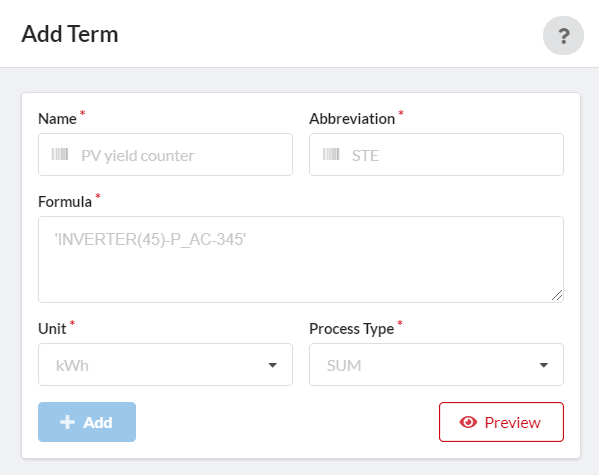Terms
It is the setting page that allows you to calculate and save on the data received in the system.
- When the system is first installed, the terms energy (STE), radiation (STI) and temperature (STT) are created. Data on the overview screen is taken from these terms.
- Many transactions in the same unit such as averaging data, seeing its total, or establishing a ratio can be done through terms.
- After the desired terms are created here, custom alarms can be set up on these terms.
- Graphs can be created on these terms from the analysis page.

Help
When the help button is clicked, 'How to Use Terms?' page will come.
- The terms previously created are listed in the first section.
-
Then, by selecting the datalogger, the types of devices connected to that datalogger and the terms that can be created with that device types are listed.
-
When devices are selected individually at the level of the device types, each device's own term is listed below.
Add Term

A name and abbreviation is written to be understood, and then the desired terms are copied and pasted into the formula field by clicking the help button. And the desired formula is created in this section. Then, select the unit and process type and click the add button.
Preview
This module allows you to view term outputs instantly. According to the entered formula, the results are displayed on a daily basis.
Process Type
-
SUM: If this type of process is selected, the term calculated allows you to display the incoming data cumulatively in the time interval you specify.
-
AVG: The term calculated when this type of process is selected allows you to view the average value of the data in the datalogger's frequency of data reception.
-
MAX: The term calculated when this process type is selected allows you to view the maximum value of the data in the datalogger's frequency of data reception.
After adding the term, clicking  this button, the range is selected from the date the station was established and updated. In this way, this term becomes accessible for historical data as well.
this button, the range is selected from the date the station was established and updated. In this way, this term becomes accessible for historical data as well.